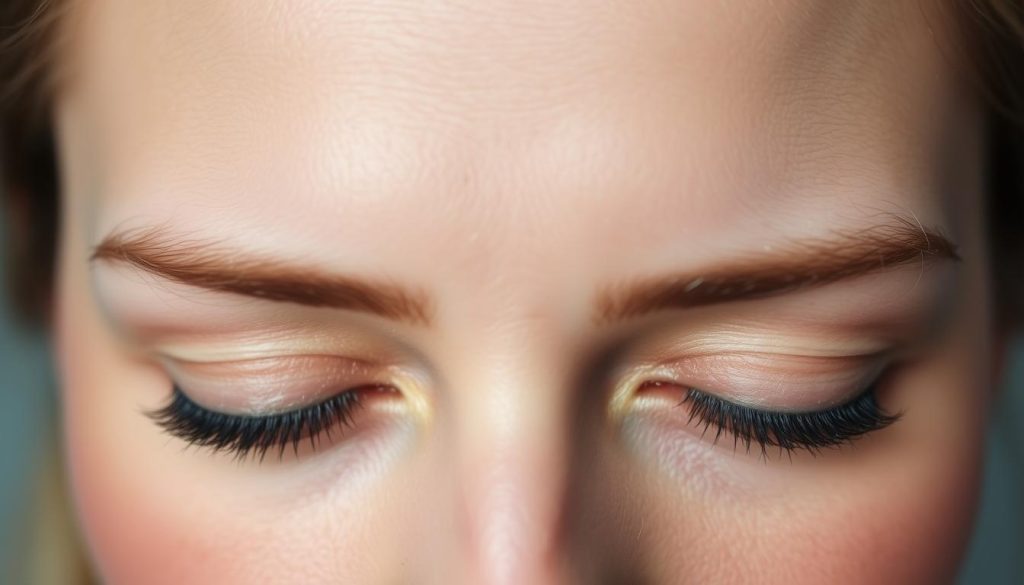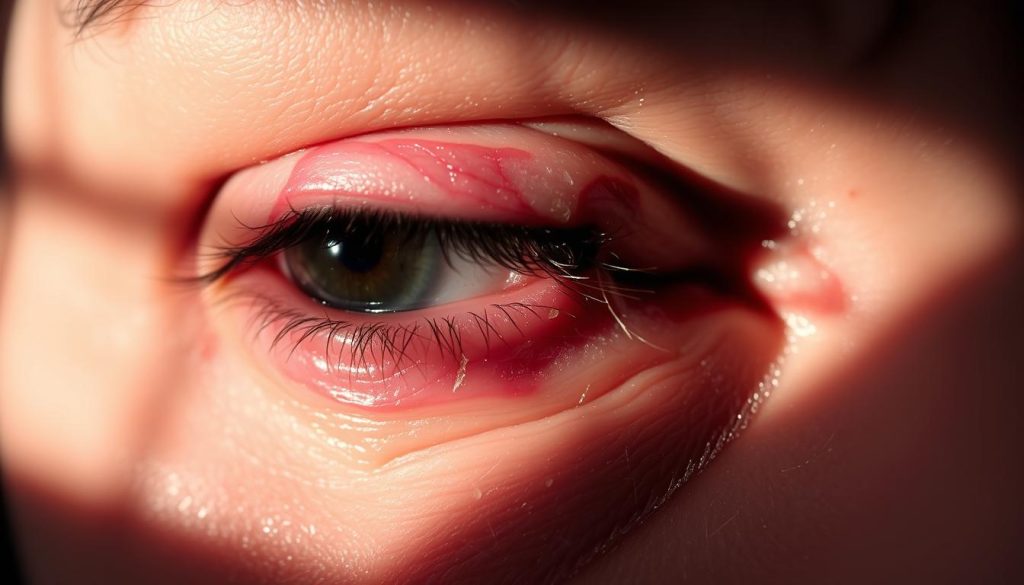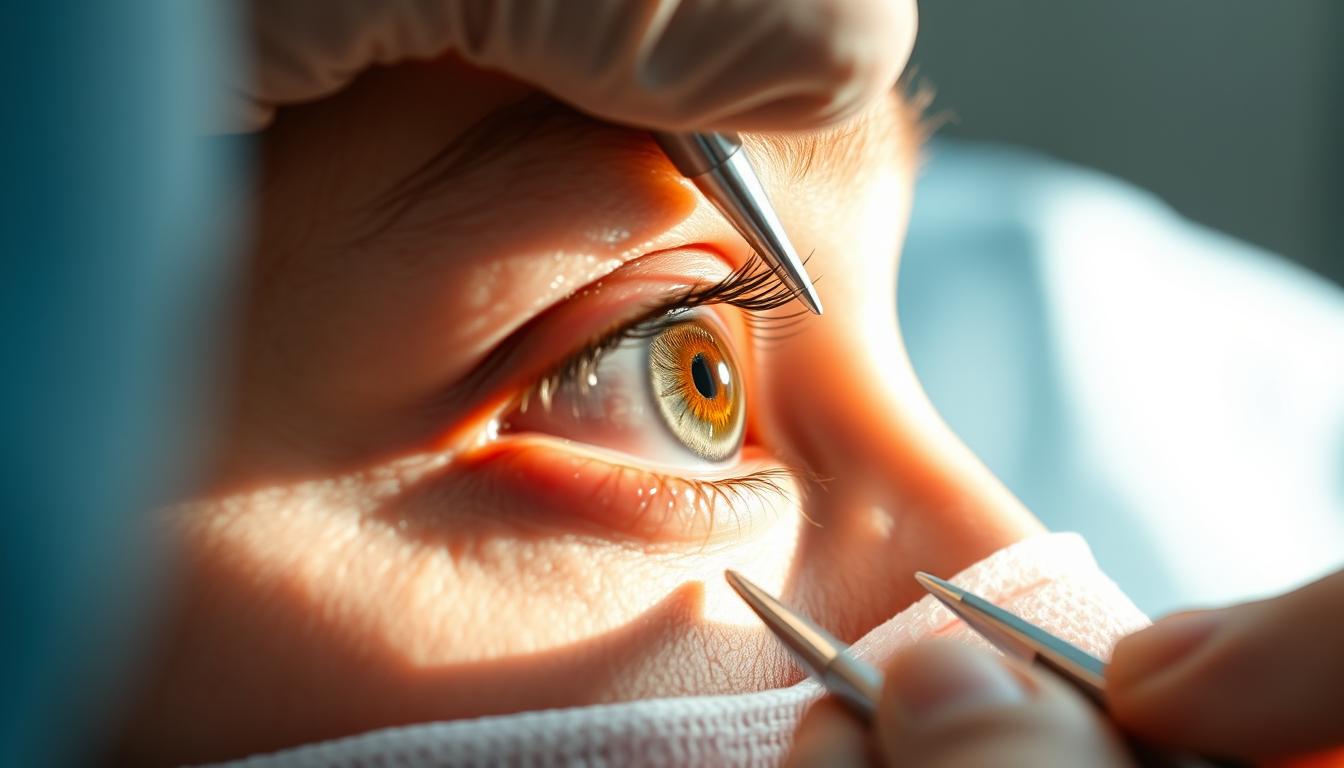Blepharoplasty, commonly known as eyelid surgery, is a surgical procedure designed to improve the appearance of the eyelids by removing excess skin, fat, and sometimes muscle from the upper and/or lower eyelids.
This comprehensive guide will walk you through the process of eyelid reduction, from understanding the surgery and its benefits to preparing for the procedure and managing recovery.
By the end of this article, readers will have a thorough understanding of what to expect before and after eyelid surgery, enabling them to make informed decisions about their appearance.
Key Takeaways
- Blepharoplasty is a surgical procedure that rejuvenates the appearance of the eyes.
- The procedure involves removing excess skin, fat, and sometimes muscle from the eyelids.
- Understanding the benefits and risks of eyelid reduction is crucial for potential candidates.
- Proper preparation and post-operative care are essential for optimal healing and results.
- Realistic expectations are key to satisfaction with the outcome of eyelid surgery.
Understanding Eyelid Reduction Surgery

Eyelid reduction surgery, medically known as blepharoplasty, is a procedure that aims to rejuvenate the appearance of the eye area. This cosmetic surgery can address various concerns related to the eyelids.
What is Blepharoplasty?
Blepharoplasty is a surgical procedure that involves modifying the eyelid to achieve a more youthful or refreshed appearance. It can be performed on the upper eyelids, lower eyelids, or both.
Types of Eyelid Reduction Procedures
Eyelid reduction surgery encompasses various techniques. Upper eyelid surgery typically involves removing excess skin and fat. Lower eyelid surgery can address issues like eyelid bags and puffiness. Procedures can be combined for comprehensive rejuvenation.
The different types of procedures include:
– Upper eyelid blepharoplasty, which focuses on removing excess skin.
– Lower eyelid blepharoplasty, addressing under-eye bags and wrinkles.
– Transconjunctival lower eyelid surgery, performed inside the lower eyelid.
– Combined upper and lower blepharoplasty for overall rejuvenation.
Benefits of Eyelid Reduction
The advantages of undergoing eyelid reduction surgery are multifaceted, ranging from cosmetic improvements to functional benefits. This procedure can significantly enhance one’s appearance and address certain eye-related issues.
Cosmetic Improvements
Eyelid reduction surgery can address age-related drooping or puffy eyelids, creating a more refreshed, youthful appearance. While it cannot alter dark circles or fine lines and wrinkles around the eye, it can significantly improve the overall look of the eyes.
Functional Benefits
The procedure can also correct drooping eyelids that interfere with vision. For patients with significant upper eyelid drooping, eyelid surgery can dramatically improve peripheral vision. Some of the benefits include:
- Expanded field of vision, allowing for greater ease and safety in daily activities
- Alleviation of discomfort associated with constantly raising eyebrows, reducing forehead tension and headaches
- Relief from dry eye symptoms exacerbated by improper eyelid positioning
| Benefits | Description |
|---|---|
| Cosmetic Improvements | Enhanced appearance with reduced drooping or puffiness |
| Functional Benefits | Improved vision and alleviation of discomfort |
Ideal Candidates for Eyelid Reduction
Determining whether you’re an ideal candidate for eyelid reduction involves assessing several key factors. The delicate skin around the eyes is prone to showing signs of aging earlier than other areas of the face.
Medical Considerations
Potential candidates should have a thorough medical evaluation. Certain health conditions may affect the outcome of eyelid surgery. It’s crucial to discuss your medical history with your surgeon to ensure you’re a suitable candidate.
Age and Skin Factors
Age and skin elasticity play significant roles in determining candidacy. While many patients are over 35, younger individuals with genetically inherited traits like puffy lower eyelids or hooded upper eyelids may also qualify. Realistic expectations are key; eyelid reduction effectively addresses excess skin and fat but not dark circles or wrinkles.

Preparing for Your Eyelid Surgery

Eyelid surgery, or blepharoplasty, requires careful preparation to minimize risks and ensure optimal outcomes. It is essential to consult with an expert plastic surgeon who specializes in surgery of the face.
Medical Evaluation and Requirements
During your consultation for a possible eyelid lift, the surgeon will ask you about your medical history and physical health, including any history of smoking, cardiovascular disease, diabetes, high blood pressure, or other circulatory disorders.
Patients should be prepared to discuss any unusual tendency to scar, disorders related to blood clotting, thyroid problems, detached retina, glaucoma, or dry eyes.
Pre-Surgery Instructions
To prepare for eyelid surgery, patients are typically instructed to:
- Stop smoking at least four weeks before surgery, as nicotine impairs healing.
- Discontinue all blood-thinning medications and supplements 2-3 weeks before the procedure.
- Arrange for someone to drive them home after the procedure and stay with them for the first 24 hours.
- Not eat or drink anything after midnight if general anesthesia will be used.
- Prepare their home with cold compresses, a comfortable recovery area, and loose, comfortable clothing.
The Eyelid Reduction Procedure
Eyelid reduction surgery is a nuanced procedure that addresses various concerns related to the eyelids. It is typically performed as an outpatient cosmetic surgery procedure.
Anesthesia Options
Patients undergoing eyelid reduction surgery have the option of local anesthesia with sedation, which allows them to remain awake but relaxed during the surgery.
Surgical Techniques
The procedure involves marking precise incision lines while the patient is upright, followed by the careful removal or repositioning of fat deposits, trimming of excess skin, and tightening of underlying muscles before closing incisions with fine sutures.
Duration and What to Expect
A typical eyelid surgery or eyelid lift procedure takes between one to three hours to complete. Patients are monitored in a recovery area for 1-2 hours after surgery before being released.
| Procedure Aspect | Details |
|---|---|
| Duration | 1-3 hours |
| Anesthesia | Local with sedation |
| Recovery Monitoring | 1-2 hours |
Potential Risks and Complications
Eyelid reduction surgery, while generally safe, comes with potential risks and complications that patients should be aware of. It is crucial to discuss these risks with a board-certified ophthalmologist to understand the benefits and risks associated with the surgery.
Common Side Effects
Common side effects of eyelid surgery include swelling, bruising, and dryness around the eyes. These effects are usually temporary and resolve on their own. However, it’s essential to follow the surgeon’s post-surgery instructions to minimize these effects.
- Swelling and bruising around the eyes
- Dryness or irritation of the eyes
Serious Complications to Be Aware Of
Though rare, serious complications can occur. These include excessive bleeding, infection, and changes in vision or eye sensation. In rare cases, complications such as ectropion or entropion may occur, requiring further surgery.
| Complication | Description |
|---|---|
| Excessive Bleeding (Hematoma) | Accumulation of blood beneath the skin, potentially requiring surgical intervention. |
| Infection | Infection at the incision sites, treated with antibiotics. |
| Changes in Vision or Eye Sensation | Uncommon complications that should be reported to the surgeon immediately. |

Recovery Timeline After Eyelid Surgery
Understanding the recovery timeline is crucial for patients undergoing eyelid surgery. The process involves several stages, from immediate post-surgery recovery to long-term healing.
The First Week Post-Surgery
The initial week is critical, with significant swelling and bruising around the eyes. Patients are advised to rest and follow post-operative instructions carefully to ensure proper healing.
Weeks 2-4 of Recovery
During weeks 2-4, swelling subsides, and patients start to see improvements in their appearance. The skin begins to look smoother, and the overall outcome of the lift surgery becomes more apparent.
Long-Term Healing
Long-term healing continues up to 6 months, with final results becoming visible. Factors like sun exposure and smoking can affect the longevity of the eyelid surgery outcomes.
Post-Operative Care Instructions
Proper post-operative care is vital for achieving the best results after eyelid reduction surgery. Following the surgeon’s instructions carefully can significantly impact the healing process and the overall outcome of the procedure.
Managing Discomfort and Swelling
After eyelid surgery, patients may experience discomfort and swelling around the eyes. To manage this, it’s recommended to keep the head elevated and use cold compresses as directed by the surgeon. This can help reduce swelling and alleviate discomfort.
Activity Restrictions and Eye Protection
To ensure optimal healing, certain activities must be avoided for several weeks after the surgery. Patients should avoid strenuous activities, heavy lifting, and bending down. It’s also crucial to protect the eyelids from the sun and wind by wearing dark, UV-protective sunglasses.
| Activity | Restriction Period |
|---|---|
| Strenuous activities, heavy lifting | At least 2-3 weeks |
| Wearing contact lenses | At least 2 weeks |
| UV protection with sunglasses | At least 4-6 weeks |
By following these post-operative care instructions, patients can help ensure a smooth recovery and achieve the desired results from their eyelid lift or eyelid surgery.
Long-Term Results and Maintenance
With proper care and maintenance, the results of eyelid surgery can last for many years, providing a more youthful and refreshed look. A healthy lifestyle and good skincare habits are crucial for maintaining the long-term results of cosmetic eyelid surgery.
Protecting the delicate skin around the eyes from sun damage is vital. Daily application of broad-spectrum SPF and wearing sunglasses are strongly recommended to maintain the youthful appearance achieved through surgery.
Regular follow-up appointments with a facial plastic surgeon can help monitor long-term results and provide timely recommendations for maintenance procedures if desired, ensuring that the eyelid reduction surgery results remain optimal.
FAQ
What is the purpose of blepharoplasty?
The primary goal of blepharoplasty is to improve the appearance of the upper and lower eyelids by removing excess skin, fat, and sometimes muscle, which can help to reduce the signs of aging and improve vision obstructed by drooping eyelids.
How long does it take to recover from eyelid surgery?
The recovery timeline varies, but most patients can expect bruising and swelling to subside within a few weeks. It may take several weeks for the eyelids to fully heal and for the final results to be visible.
Will blepharoplasty eliminate dark circles under my eyes?
While blepharoplasty can improve the appearance of the lower eyelids, it may not completely eliminate dark circles. Dark circles can be caused by various factors, including genetics, skin pigmentation, and blood vessel visibility.
Can blepharoplasty improve my vision?
Yes, in cases where drooping eyelids obstruct vision, blepharoplasty can help improve vision by removing excess skin and fat that may be blocking the eye.
What are the potential risks and complications of eyelid surgery?
As with any surgical procedure, blepharoplasty carries risks, including infection, bleeding, and scarring. More serious complications, such as vision loss or double vision, are rare but can occur.
How can I minimize scarring after blepharoplasty?
To minimize scarring, it’s essential to follow post-operative care instructions, including keeping the incision sites clean, avoiding strenuous activities, and attending follow-up appointments with your surgeon.
Can I undergo blepharoplasty if I have high blood pressure?
Patients with high blood pressure should discuss their condition with their surgeon, as uncontrolled hypertension may increase the risk of complications during and after surgery.
